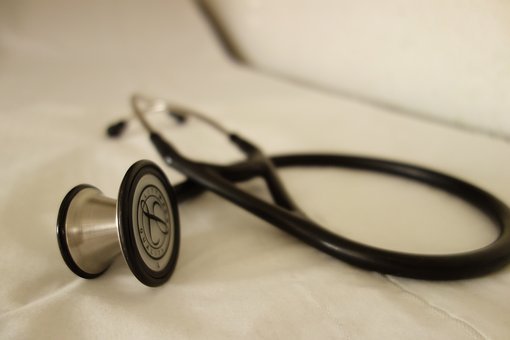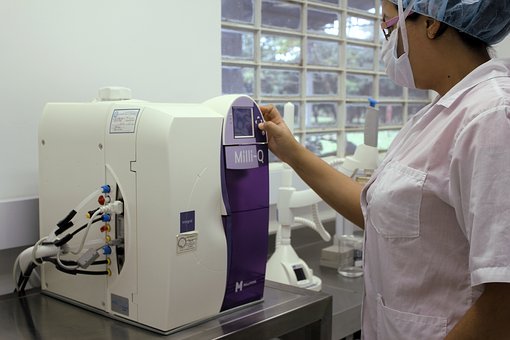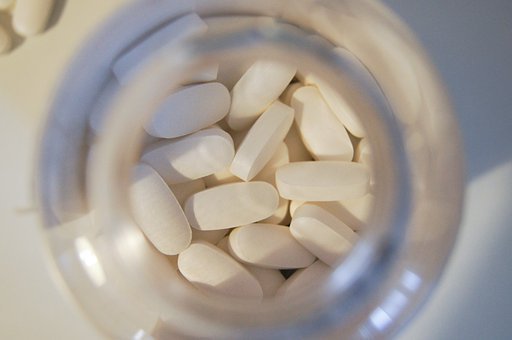Hydrosalpinx: Causes, Symptoms, Complications, Diagnosis, Treatment, Management and Prevention
Hydrosalpinx is a common gynecological disease, which is caused by salpingitis, tubal pregnancy, endometriosis, tubal tumor, and other diseases.

Epidemiology
Incidence rate: there is no authoritative data on the disease incidence in China.
High-risk population: at present, there is no evidence-based medical evidence to support the disease in a certain population.
Causes
Delivery or induced abortion
After childbirth or induced abortion, the pathogen may invade the pelvic connective tissue and other parts of the internal genitalia through the lymphatics of vulva, vagina, and uterine incision, causing inflammation in the uterus, fallopian tube and pelvic peritonitis. In addition, residual placenta and incomplete abortion can also cause inflammation, and some patients with IUD had chronic salpingitis.
The patient did not get timely and thorough treatment, which led to chronic inflammation. The long-term inflammatory stimulation made the fallopian tube thick and hard, and then the lumen adhesion, stenosis, and even adhesion with the surrounding tissue, which eventually led to the adhesion and atresia of the fallopian tube in different parts, resulting in water accumulation.
Poor sexual hygiene
Menstrual intercourse, unclean sexual life, frequent sex, multiple sexual partners, or the use of unclean menstrual pads may cause the pathogen to invade the fallopian tube and cause inflammation, which may lead to hydrosalpinx.
Infection after an intrauterine operation
Such as curettage, salpingostomy, hysterosalpingography, hysteroscopy, and so on, if the operation is improper, it may cause pelvic infection and hydrosalpinx.
Direct spread of inflammation in adjacent organs
The infection of other organs in the abdominal cavity can directly spread to the fallopian tube, such as cervicitis. In addition, appendicitis, peritonitis can also spread to the fallopian tube. Inflammation of the fallopian tube can cause adhesion, hyperemia, and edema of the wall of the fallopian tube, which will lead to the formation of water accumulation.
Symptoms
The patients can show non-specific symptoms such as dysmenorrhea, irregular menstruation, abdominal pain, and increased vaginal secretions. May be accompanied by fever, frequent urination, pain, and other symptoms.

Typical symptoms
1. Vaginal secretions increase: when hydrosalpinx, the dilated part of the fallopian tube can still communicate with the unexpanded part of the lumen, resulting in intermittent vaginal discharge.
2. Abdominal pain: abdominal pain of different degrees, manifested as pain on one or both sides of the lower abdomen, with a sense of falling.
3. Irregular menstruation: it can be manifested as increased menstrual volume, prolonged menstrual period, etc.
4. Others: patients may also have dysmenorrhea, lumbosacral pain, and other symptoms.
Concomitant symptoms
In the event of an acute salpingitis attack, the patient may be accompanied by the following symptoms:
High fever, chills and other systemic symptoms;
Discharge purulent secretion from the vagina;
Urinary frequency, urgency, and pain may occur when the urinary system is involved.
Discharge purulent secretion from the vagina;
Urinary frequency, urgency, and pain may occur when the urinary system is involved.
Complication
1. Infertility
Serious hydrosalpinx can cause the drop or loss of oviduct egg collection and delivery capacity, and too much hydrosalpinx can flow into the uterine cavity retrogradely, resulting in endometritis, affecting embryo implantation, resulting in infertility.
2. Ectopic pregnancy
Hydrosalpinx can affect the normal operation of the fertilized egg so that it can not reach the uterine cavity, and ectopic pregnancy occurs in the fallopian tube.
3. Others
Hydrosalpinx has a serious impact on embryo transfer. Hydrosalpinx can flow back into the uterine cavity, which may interfere with the embryo or have toxic effects on the embryo, increase the risk of abortion, and even cause the embryo to stop breeding.
Diagnosis
The doctor may ask the following questions during the visit, and the patient can prepare to answer them in advance:
Previous history of pelvic inflammation;
Whether there are symptoms such as leucorrhea increase and abdominal pain, and how long these symptoms have occurred;
Whether the previous menstruation is regular, how much is the amount, and whether there is any change recently;
Previous birth history, vaginal delivery, cesarean section and abortion history;
Have you done salpingostomy, hysterosalpingography, hysteroscopy before?
Whether there are symptoms such as leucorrhea increase and abdominal pain, and how long these symptoms have occurred;
Whether the previous menstruation is regular, how much is the amount, and whether there is any change recently;
Previous birth history, vaginal delivery, cesarean section and abortion history;
Have you done salpingostomy, hysterosalpingography, hysteroscopy before?

Relevant inspection
Doctor's physical examination
laboratory examination
Imaging examination
Ultrasonic examination
Hysterosalpingography (HSG)
CT
Magnetic resonance (MRI) examination
Hysteroscopy
laboratory examination
Imaging examination
Ultrasonic examination
Hysterosalpingography (HSG)
CT
Magnetic resonance (MRI) examination
Hysteroscopy
Differentiation
Generally, the clinical diagnosis of the disease is clear. If there is a complex situation, it must be judged by the clinician according to the individual situation of the patient. For postmenopausal women, hydrosalpinx should be distinguished from salpingocarcinoma.
Treatment
The treatment of hydrosalpinx is to eliminate hydrosalpinx, restore the normal anatomical structure and function of the fallopian tube and relieve the clinical symptoms. Doctors will give individualized treatment according to the patient's fertility requirements, the severity of hydrosalpinx, and the patient's clinical symptoms, including conservative treatment and surgical treatment:
For patients whose condition are mild without obvious clinical symptoms and fertility needs, they can not be treated temporarily, but they need to pay attention to the change of their condition;
The acute salpingitis patients without reproductive requirements can be treated with antibiotics;
The acute salpingitis patients without reproductive requirements can be treated with antibiotics;
Surgical treatment can be used for patients with severe lesions, damaged fallopian tube function, and difficult to recover.

Medication
The doctor will decide the treatment plan according to the general situation and condition of the patient. The pathogens of salpingitis are mostly mixed infection, so we should choose broad-spectrum antibiotics or combination drugs under the guidance of doctors.
Oral or intramuscular antibiotic injection: the patient is generally in good condition with mild symptoms, can tolerate oral antibiotics and can be given oral or intramuscular antibiotic injection treatment in the outpatient with follow-up conditions.
Intravenous drip antibiotics: Patients with poor general conditions, serious illness, accompanied by other symptoms, or outpatient treatment is invalid, diagnosis is unclear, etc., should be hospitalized to give intravenous drip antibiotics based comprehensive treatment.
Surgical treatment
Laparoscopic salpingostomy
Salpingectomy
Tubal ligation
Tubal embolization
Salpingectomy
Tubal ligation
Tubal embolization
TCM Treatment
Acupuncture can improve the blood circulation of the fallopian tube and its surrounding tissues through neurohumoral reflex and local direct effect, promote the absorption and regression of inflammation, which may be conducive to the patency of the fallopian tube.
Traditional Chinese medicine retention enema, external application, and other methods have anti-inflammatory and analgesic, promoting blood circulation and unblocking collaterals, which can effectively treat chronic pelvic inflammation. In addition, the oral Fuyan pill has a very significant effect.
Physiotherapy
Through the stimulation of warm heat, it can promote the local blood circulation, which is conducive to the absorption and regression of inflammation. The commonly used physical treatment methods are the ultrashort wave, microwave, ultraviolet radiation, and so on.
Prognosis
Hydrosalpinx has a serious impact on the fertility of women of childbearing age and can have a negative impact on IVF-ET, which will significantly affect the implantation of fertilized eggs, reduce the pregnancy rate, and increase the risk of ectopic pregnancy or even abortion.

Management
In daily life, patients should develop good personal hygiene habits and strengthen nutrition and physical fitness. Follow the doctor's advice to review regularly to let the doctor know the treatment effect, so as to adjust the treatment plan in time.
Diet management
Strengthen nutrition during menstruation, after induced abortion, and after delivery;
Pay attention to eat more nutritious, digestible, and vitamin-rich foods.
Pay attention to eat more nutritious, digestible, and vitamin-rich foods.
Lifestyle Management
Clinically, most hydrosalpinx is caused by inflammation of female internal genitalia (such as adnexitis), and unclean sexual life is an important pathogenic factor. Therefore, it is an important measure to prevent hydrosalpinx by avoiding sexual intercourse during menstruation, cleaning external genitalia carefully before sexual life, and preventing the invasion of germs.
You can clean the vulva with water every day, but don't often use medicinal lotion to clean the vagina, because it is easy to damage the acid-base environment of the vagina and lead to vaginitis.
At the same time, we should strengthen our own physique, increase resistance and immunity, and reduce the chance of disease.
Prevention
Avoiding the abuse of antibiotics can keep the balance of the vaginal microenvironment, prevent the occurrence of vaginitis, and reduce the risk of hydrosalpinx.
Women with sexual life should have a gynecological examination at least once a year, so as to achieve early detection, diagnosis, and treatment of gynecological diseases.
Maintain personal hygiene;
Wash vulva correctly;
Pay attention to gynecology physical examination;
Pay attention to supplementing nutrition and health care.
You may also be interested in:
Can Blocked Fallopian Tubes affect Ovulation?
previous pageCan Fuyan Pill Unblock Fallopian Tubes?
next page
You may also be interested in
- Hydrosalpinx and IVF: What Are the Chances of Successful Embryo Implantation?
- Is Hysterosalpingography Harmful to the Body?
- Can Hydrosalpinx Be Thoroughly Drained by Aspiration Surgery?
- Pay Special Attention to These Hydrosalpinx Symptoms!
- Hydrosalpinx: Frequent Checks and Excessive Anxiety Affect Pregnancy!
Testimonials
- Adenomyosis with Ureaplasma Urealyticum Cured by Fuyan Pill
- Tubal blockage with hydrosalpinx can be cured by TCM shortly
- Fuyan Pill Helps A woman with Adenomyosis Get Pregnant
- A Woman with Hydrosalpinx Is Cured with Fuyan pill
- Pelvic Inflammatory Disease Testimonials
- Irregular Vaginal Bleeding and Endometrial Thickening Cured by Fuyan Pill
- Pruritus Vulvae and Frequent Urination: Mycoplasma Infection Cured after 2 Courses



